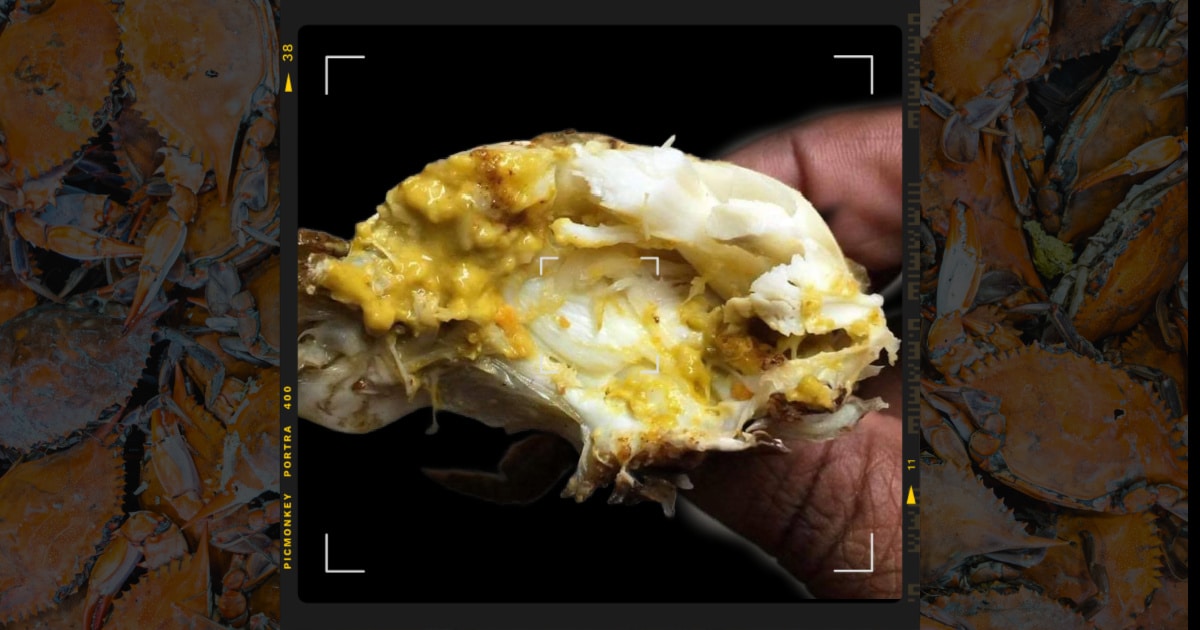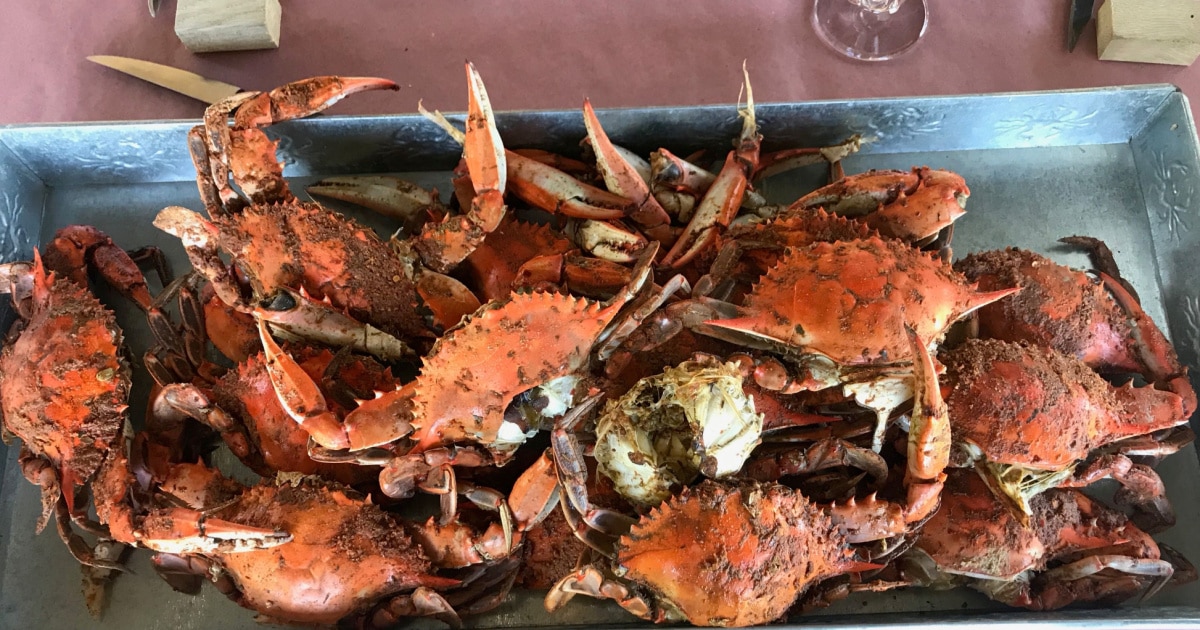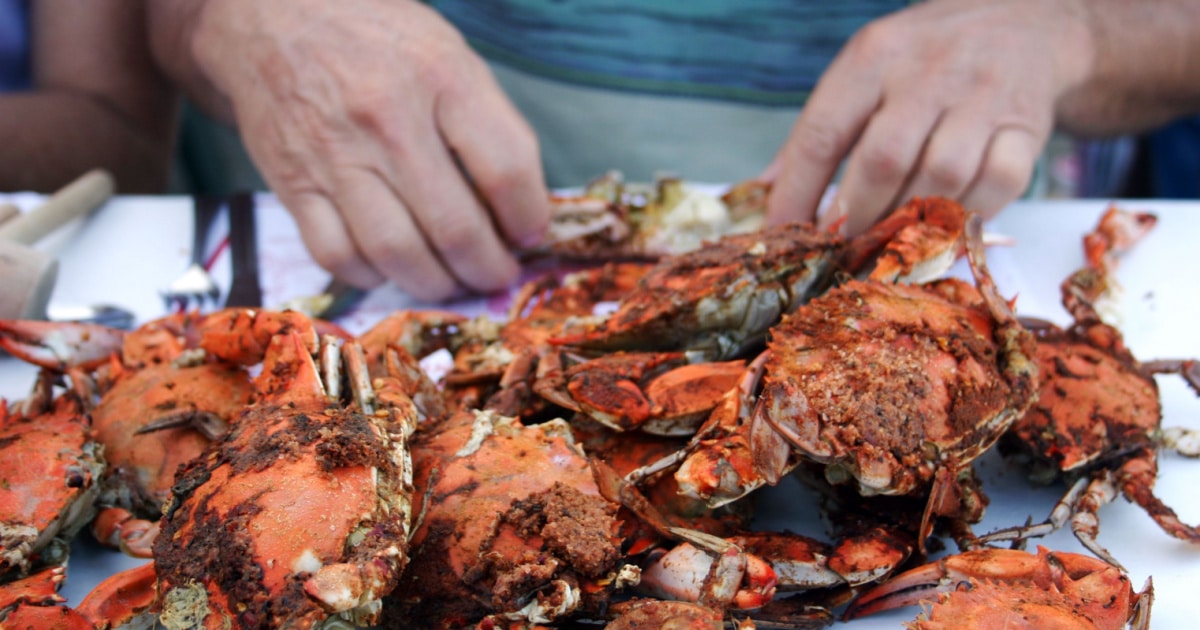What is the Yellow Stuff in Crabs?
Hey there! Have you ever cracked open a crab and found some yellow stuff inside? It’s something that catches the eye of many crab lovers. You might wonder, “What is the yellow stuff in crabs?”
Well, you’re in the right place to find out. This yellow substance is not only common but also has its own unique name and purpose. In this post, we’re going to uncover everything about it.
From what it is, to why it’s there, and the big question: should you eat it? If you’re keen on crabs and eager to learn more about what you’re eating, stick around. We’re about to dive deep into the mystery of the yellow stuff in crabs.
- Unveiling the Mystery: What is the Yellow Stuff in Crabs?
- Nutritional Insights: The Yellow Stuff in Crabs Explained
- Identifying the Yellow Stuff in Crabs: A How-To Guide
- The Biological Significance of Crabs’ Yellow Stuff
- Debunking Myths: The Truth About the Yellow Stuff in Crabs
- To Eat or Not to Eat: The Safety of Crabs’ Yellow Stuff
- Different Cultures View: What is the Yellow Stuff in Crabs
- Preparing Crabs: Handling the Yellow Stuff
- FAQs: What is the Yellow Stuff in Crabs?
- Cracking the Case: The Final Verdict on Crab’s Yellow Mystery
Unveiling the Mystery: What is the Yellow Stuff in Crabs?
So, what exactly is this yellow stuff you find in crabs? This substance is known as “crab mustard” or “tomalley” in culinary terms. It’s not mustard, though, nor is it related to the condiment we all know.
Tomalley acts as the crab’s liver and pancreas, which might sound a bit odd at first. But in the world of crabs, it’s a crucial part of their system. This yellow stuff filters impurities from the crab’s blood, much like our liver does for us.
Now, you might be thinking, “Should I be eating something that filters impurities?” It’s a valid question. In many cultures, tomalley is considered a delicacy, prized for its rich flavor. It adds a depth to dishes that’s hard to replicate with any other ingredient.
But before you decide whether to try it or not, there’s more to learn about this intriguing part of the crab. Let’s keep exploring to find out how it’s used and what makes it so special in culinary traditions around the world.
Nutritional Insights: The Yellow Stuff in Crabs Explained
Now, let’s talk about whether the yellow stuff in crabs, the tomalley, is good for you. When it comes to nutrition, this part of the crab is quite interesting. It’s packed with flavors and nutrients, but it’s also something you want to consume in moderation.
Tomalley is rich in certain fats and vitamins that can be beneficial. For example, it contains omega-3 fatty acids, which are great for your heart health. It also has a good amount of vitamin B12, crucial for your nerves and blood cells.
However, because it acts as a filter for the crab, it can sometimes contain toxins from polluted waters. This doesn’t mean you should always avoid it, but it’s good to know where your crabs are coming from. Eating tomalley from crabs caught in clean, unpolluted waters is generally considered safe.
So, if you’re curious and want to try it, go ahead, but remember to enjoy it as a treat rather than a regular part of your diet. Next, we’ll dive into how you can identify and use this yellow stuff in your cooking, making your crab dishes even more delicious.
Identifying the Yellow Stuff in Crabs: A How-To Guide
Spotting the yellow stuff in crabs, also known as tomalley, is pretty straightforward once you know where to look. When you open up a cooked crab, you’ll find it in the body cavity, nestled between the shell and the meat. It’s that soft, richly colored paste that contrasts with the white meat.
If you’re planning to use tomalley in your cooking, here’s a simple guide to get you started:
- Open the Crab: Carefully crack open the crab’s shell after it’s been cooked. You want to do this gently to keep the tomalley intact.
- Locate the Tomalley: Look for the creamy, yellowish-green substance. That’s your tomalley. Its color can vary slightly, but it’s usually quite distinct.
- Scoop It Out: Use a small spoon or fork to gently scoop out the tomalley. If you’re not using it right away, you can store it in the fridge for a short period.
Now, how do you use this in recipes? Tomalley can add depth to sauces and soups, giving them a unique, rich flavor. Try mixing it into a crab bisque or a seafood pasta sauce. Just remember, a little goes a long way because of its strong taste.
Before we move on, it’s worth noting that while tomalley can be a tasty addition to dishes, it’s best enjoyed in moderation due to potential toxins, as mentioned earlier. Always ensure your crabs come from clean, safe waters, especially if you’re planning to indulge in the tomalley.

The Biological Significance of Crabs’ Yellow Stuff
Ever wondered why crabs have that yellow stuff, to begin with? This isn’t just a random feature; it plays a crucial role in the crab’s body. Known as tomalley, this substance serves as both the liver and pancreas for the crab, performing vital functions.
First off, the tomalley is key in the crab’s digestive process. It produces enzymes that help break down the crab’s food, making it easier to absorb nutrients. Think of it as the crab’s chemical processing plant, turning what it eats into useful energy and building blocks.
Moreover, the tomalley filters out toxins from the crab’s body, much like our liver does for us. This is why it can sometimes contain contaminants if the crab lives in polluted waters. It’s a crucial defense mechanism for the crab, keeping it healthy in its natural habitat.
Understanding the biological role of the tomalley gives us insight into how complex and fascinating marine life is. It’s a reminder of how every part of an organism, no matter how small or seemingly odd, has a purpose. Next, we’ll tackle some common myths about the yellow stuff in crabs and set the record straight.
Debunking Myths: The Truth About the Yellow Stuff in Crabs
There are quite a few myths floating around about the yellow stuff in crabs, also known as tomalley. Let’s clear up some of the confusion and get to the facts in regards to our main concern- what is the yellow stuff in crabs?
Myth 1: Tomalley is harmful and should always be avoided. While it’s true that tomalley can contain toxins if the crab lives in polluted waters, it’s generally safe to eat in moderation from crabs caught in clean environments. The key is knowing the source of your crabs.
Myth 2: Eating tomalley can make you sick. This myth is partially based on the fact that, like any organ that filters toxins, the tomalley can accumulate harmful substances. However, the risk is minimal for crabs from clean waters. As with many foods, the danger comes from overconsumption or consuming it from questionable sources.
Myth 3: Tomalley is just waste material. Actually, tomalley is rich in nutrients and serves important functions in the crab’s body, as we’ve discussed. It’s not waste; it’s more like the crab’s liver and pancreas rolled into one.
Understanding these truths helps us appreciate the complexity of crabs and the ecosystems they live in. It also allows us to make informed decisions about what parts of the crab we choose to eat. Next, we’ll explore the big question: to eat or not to eat the yellow stuff in crabs?
To Eat or Not to Eat: The Safety of Crabs’ Yellow Stuff
Deciding whether to eat the yellow stuff in crabs, known as tomalley, comes down to a few important considerations. While it’s a delicacy for some, it’s not everyone’s cup of tea, and there are valid reasons for both choices.
Safety First: The main concern with consuming tomalley is the potential for it to contain toxins, especially from crabs caught in polluted waters. The tomalley acts as a filter, absorbing impurities from the crab’s environment. Therefore, knowing the source of your crabs is crucial. Crabs from clean, unpolluted waters are generally safe, and their tomalley is less likely to contain harmful substances.
Moderation is Key: Even if you decide to try or enjoy tomalley, it’s wise to consume it in moderation. Because of its role in the crab’s body, it can concentrate certain substances. Enjoying it as an occasional delicacy rather than a regular part of your diet is a good practice.
Personal Preference: Some people love the rich, intense flavor tomalley adds to dishes, while others prefer to skip it due to its texture or taste. If you’re curious, try a small amount mixed into a crab dish to see how you like it.
Cultural and Culinary Traditions: In many cultures, tomalley is prized for its flavor and is used to enhance various dishes. If you’re exploring different cuisines, including tomalley can offer a more authentic experience.
In conclusion, whether to eat the yellow stuff in crabs is a personal choice that should be informed by safety considerations, moderation, and personal taste. Up next, we’ll look at how different cultures view and use tomalley in their culinary traditions.
Different Cultures View: What is the Yellow Stuff in Crabs
The yellow stuff in crabs, or tomalley, is viewed differently across the world, reflecting the diverse culinary traditions and preferences that vary from one culture to another.
In Some Cultures, It’s a Delicacy: Many coastal communities, especially those in North America and parts of Asia, consider tomalley a delicacy. It’s often used to enrich sauces, soups, and stuffings, adding a depth of flavor that’s hard to replicate with any other ingredient.
A Sign of Freshness and Quality: In some regions, the presence of vibrant, rich tomalley is a sign of a fresh and high-quality crab. Chefs and home cooks alike prize it for both its flavor and as a mark of a well-chosen crab.
Health and Safety Concerns: While many enjoy tomalley, there’s also a cautious approach in some cultures due to potential health risks associated with pollutants. This has led to varied recommendations about consumption, with some advising against eating it, especially in areas where water pollution is a concern.
Culinary Creativity: From a culinary perspective, tomalley is a versatile ingredient that inspires creativity in the kitchen. Whether it’s blended into a bisque, mixed into crab cakes, or simply spread on toast, it offers a unique taste experience.
Understanding these cultural perspectives enriches our appreciation of global culinary traditions and the place of crabs and their tomalley within them. It’s a reminder of the shared human experience of finding nourishment and pleasure in the natural world, while also highlighting the importance of sustainable and informed seafood consumption.

Preparing Crabs: Handling the Yellow Stuff
When it comes to preparing crabs, dealing with the yellow stuff, or tomalley, can be a new experience for many. Here’s how to handle it, whether you’re trying it for the first time or looking to incorporate it into your cooking more often.
1. Cleaning the Crab: Start by cooking your crab as you normally would, through boiling or steaming. Once cooked, let it cool down enough so you can handle it. To access the tomalley, you’ll need to open the crab’s shell. This is done by lifting the tail flap (known as the apron) and removing the carapace (the shell covering the crab’s body).
2. Finding the Tomalley: Once you’ve opened the crab, you’ll see the yellow stuff right there in the body cavity. It’s hard to miss due to its distinctive color and texture.
3. Deciding to Keep or Remove: If you’re curious about tasting the tomalley, you can scoop it out with a spoon and set it aside. If you’re not keen on trying it, you can simply remove it and discard it. Remember, whether you choose to eat it or not is entirely up to personal preference and safety considerations.
4. Using Tomalley in Cooking: For those interested in exploring the culinary uses of tomalley, it can be a game-changer in dishes. It adds a rich, concentrated crab flavor to sauces, soups, and fillings. A little goes a long way, so start with a small amount and adjust to taste.
Safety Tip: As mentioned, while tomalley can be a delicious addition to your dishes, it’s important to consume it in moderation and ensure your crabs come from clean, pollution-free waters to minimize any health risks.
By understanding how to properly handle the yellow stuff in crabs, you can make informed choices in the kitchen, enhancing your cooking with new flavors and textures.
FAQs: What is the Yellow Stuff in Crabs?
Let’s address some common questions about the yellow stuff in crabs, also known as tomalley, to help clarify any lingering doubts or curiosity you might have.
Q: Can you eat the yellow stuff in every type of crab? A: Yes, most crabs have this yellow substance, which is their liver and pancreas. However, the quantity and taste might vary depending on the crab species. Always ensure the crabs are sourced from clean waters.
Q: Does the yellow stuff in crabs taste good? A: Taste is subjective, but many people find tomalley delicious, with a rich, concentrated crab flavor. It’s considered a delicacy in many culinary traditions.
Q: Is it safe to eat the yellow stuff in crabs all the time? A: While tomalley can be safe to eat, it should be consumed in moderation. It can accumulate toxins from the crab’s environment, so it’s wise to limit intake and ensure the crabs are from a clean source.
Q: How do you store tomalley if you’re not using it right away? A: If you’ve decided to keep the tomalley but aren’t using it immediately, it can be stored in the refrigerator for a short period. Make sure it’s covered or in an airtight container. For longer storage, freezing is an option, though it may alter the texture slightly.
Understanding these aspects of the yellow stuff in crabs can enhance your dining and cooking experiences, allowing you to enjoy this delicacy safely and deliciously.
Cracking the Case: The Final Verdict on Crab’s Yellow Mystery
We’ve taken a deep dive into what is the yellow stuff in crabs, exploring everything from its biological significance to its culinary uses and safety considerations. Whether you decide to try tomalley or not, understanding this aspect of crabs enriches your knowledge of seafood and broadens your culinary horizons.
Remember, the key to enjoying tomalley safely is sourcing crabs from clean, unpolluted waters and consuming it in moderation. This ensures you get to savor its unique flavor without concern.
Crabs offer a fascinating glimpse into the diversity of marine life and the complexity of our food systems. By learning about all parts of the crab, including the tomalley, we gain a greater appreciation for these creatures and the ecosystems they inhabit.
So, the next time you’re cracking open a crab, take a moment to consider the yellow stuff. Whether you choose to eat it, cook with it, or simply learn about it, you’re participating in a rich tradition of seafood cuisine that spans cultures and continents.
Happy crabbing, and enjoy the journey of discovery that comes with every bite!
Explore More From T.L. Morris Seafood
If you enjoyed this post, you’re in for a treat! Dive deeper into seafood with some of my other articles that readers have loved:
- Can Blue Crabs Live in Freshwater? Truth Revealed!– Discover the fascinating world of blue crabs: Can blue crabs live in freshwater? Uncover their habitat needs, adaptability, and survival challenges.
- Can You Eat Raw Crab Meat? Separating Fact from Fiction– People ask ‘Can You Eat Raw Crab Meat?’ – Discover the health risks of uncooked crab and learn safe preparation methods.
- Chesapeake Charm: The Story of Maryland Crabs and Their Cultural Legacy– Unveil the captivating world of Maryland crabs: a journey through the vibrant culinary legacy and deep-rooted traditions of the Chesapeake Bay.
Stay connected and keep exploring! Don’t forget to subscribe for the latest updates and insights.

